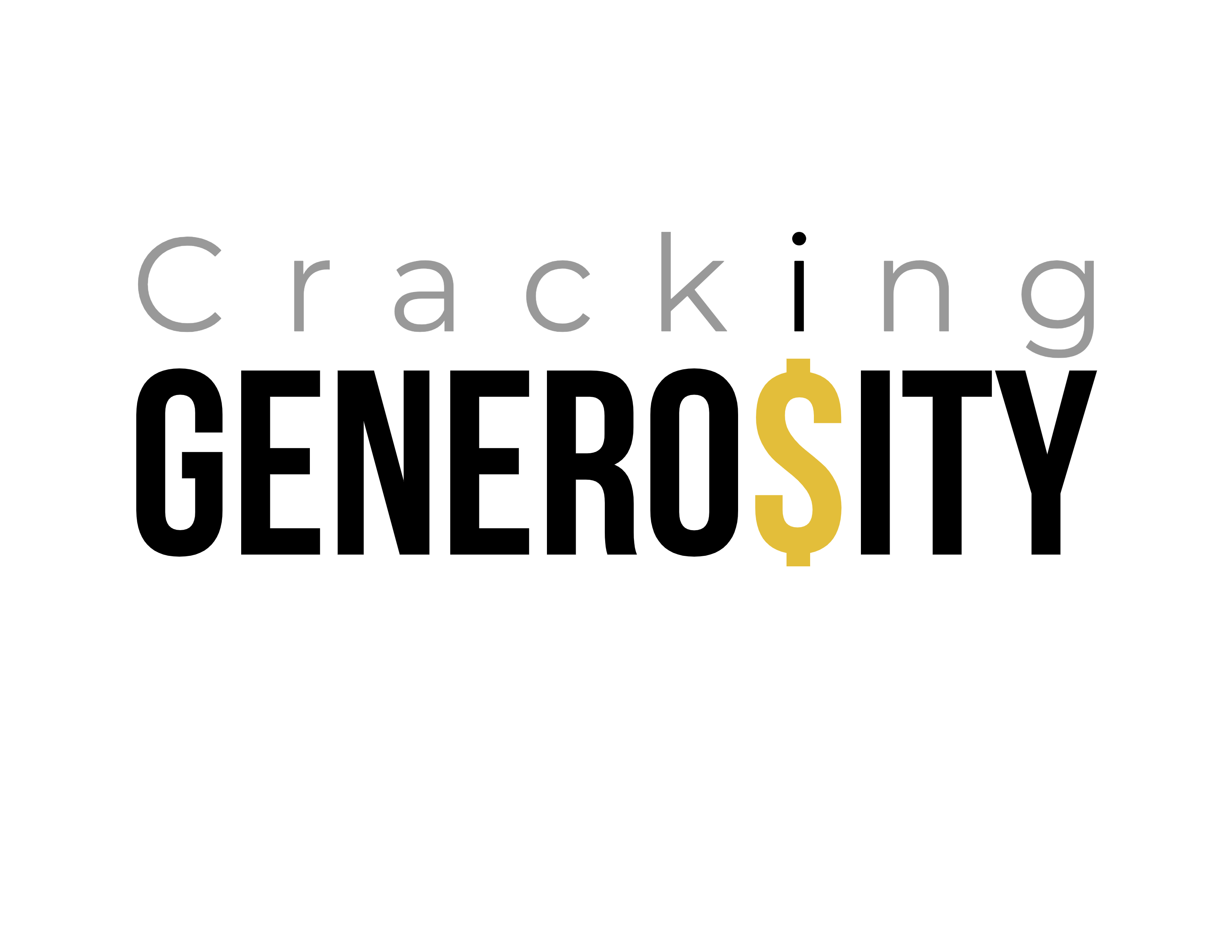
4 minute read
How generosity transactions pack the biggest punch
Donating a buck to a charity is not like spending a buck to buy a thing. While that may seem obvious, I continually find people in nonprofits treating donations made as if a donor were buying a thing. Knowing the difference is vital to cracking generosity. So here's a list to get that clarity started.
Generosity transactions :
1. Are dollar transactions that are given in trust by a citizen with the primary expectation that the money will be used as the asker (i.e. the nonprofit/charity) says they will.
2. Are not dollar values given based on some idea of a competitive marketplace made up of other non-profits competing for donations from the same individual. The amount given tends to be a measure of the degree to which the work of the non-profit inspires the giver. In other words, the giver wishes for the gift to be as large as they can make it when they regard a cause to be doing work that deeply resonates in their hearts.
3. The gift contains little thought of trying to get a bargain.
4. There is considerably less work required (and therefore less cost) on the giver's part to give and on the charity to solicit generosity transactions than exchange transactions (i.e. buying a thing). For example, the giver does not need to cover the cost of dressing up to go to an auction event they would rather not attend. They have better things to do with their time. Neither does the nonprofit need to get entangled in the costs of running such an event. The nonprofit needs only to ask.
5. Generosity transactions given to a nonprofit are mostly not time-constrained. Within the intent to “use the money as the charity sees fit”, the donor is happy for the money to be used as best suits the work of the charity, not when or how the giver wants the donation used. By contrast, grants or government contracts come with time constraints and terms and conditions.
6. Generosity transactions contain no pressure for the non-profit to provide commercial payback, as is typically expected with business sponsorship. That is, the purest of generosity transactions have no commercial strings attached.
7. Unlike charities that undertake campaigns like Red Nose Day, generosity transactions do not require a charity to manage a warehouse of stock and inventory with all of its associated overheads. Nor does it need to pay a commission to a franchise holder of a fundraising brand from the money raised by such campaigns (as I once heard was the case with Red Nose Day appeals across the world).
8. More often than not, the giver of a generosity transaction will give again when asked and is happy to do so if they can. Of course, they are more inclined to do so when they have been shown that their last donation was applied to a good cause in the way the charity told them they would apply it.
9. The profit in a generosity transaction tends to be significantly higher than any other form of income from exchange transactions (buying and selling stuff). Generosity transactions are the best way, bar none, for a non-profit to achieve at least 80% of donated money going to the work of a good cause. Donors and yet-to-be donors are usually happy for up to 20% of their donated dollars to cover marketing and administrative costs. But preferably less whenever possible.
So Malcolm, if all this is true, where do we find such generous people to make these generosity transactions to benefit a non-profit?
You start by clicking on the front cover of the "appetizer" to my book Cracking Generosity below and skipping to page 65 where you will discover The Fourfold Generosity Opportunity!











